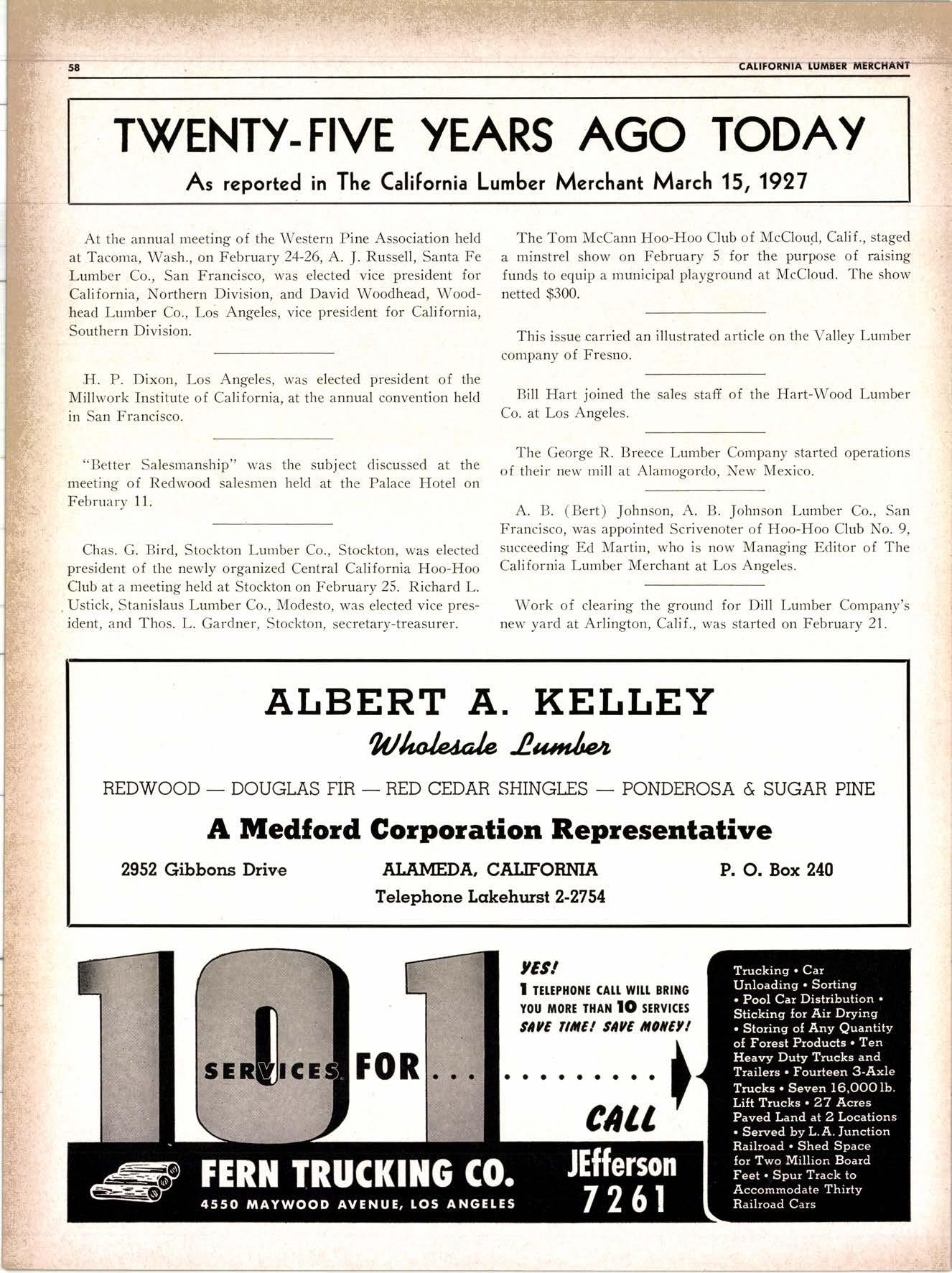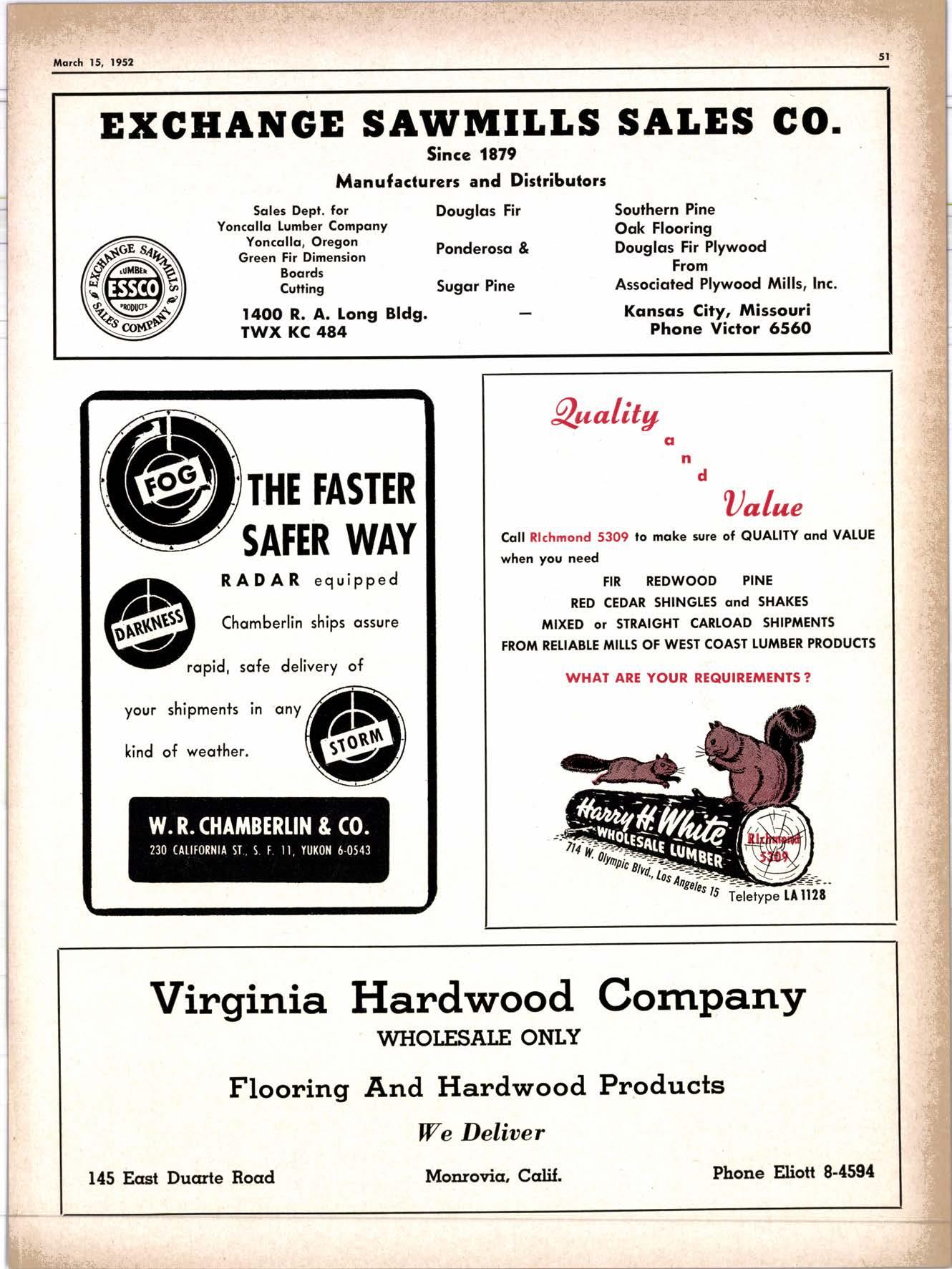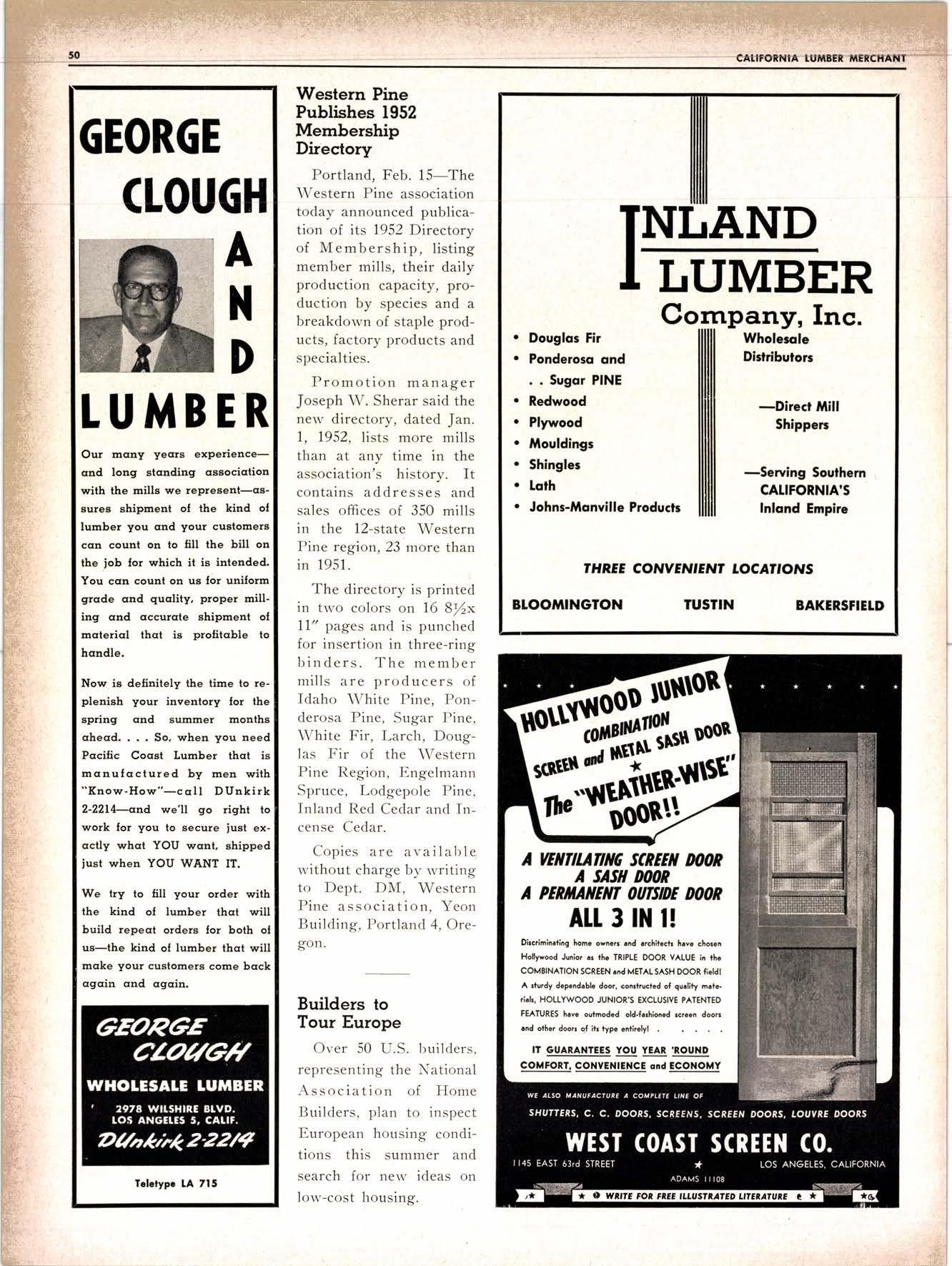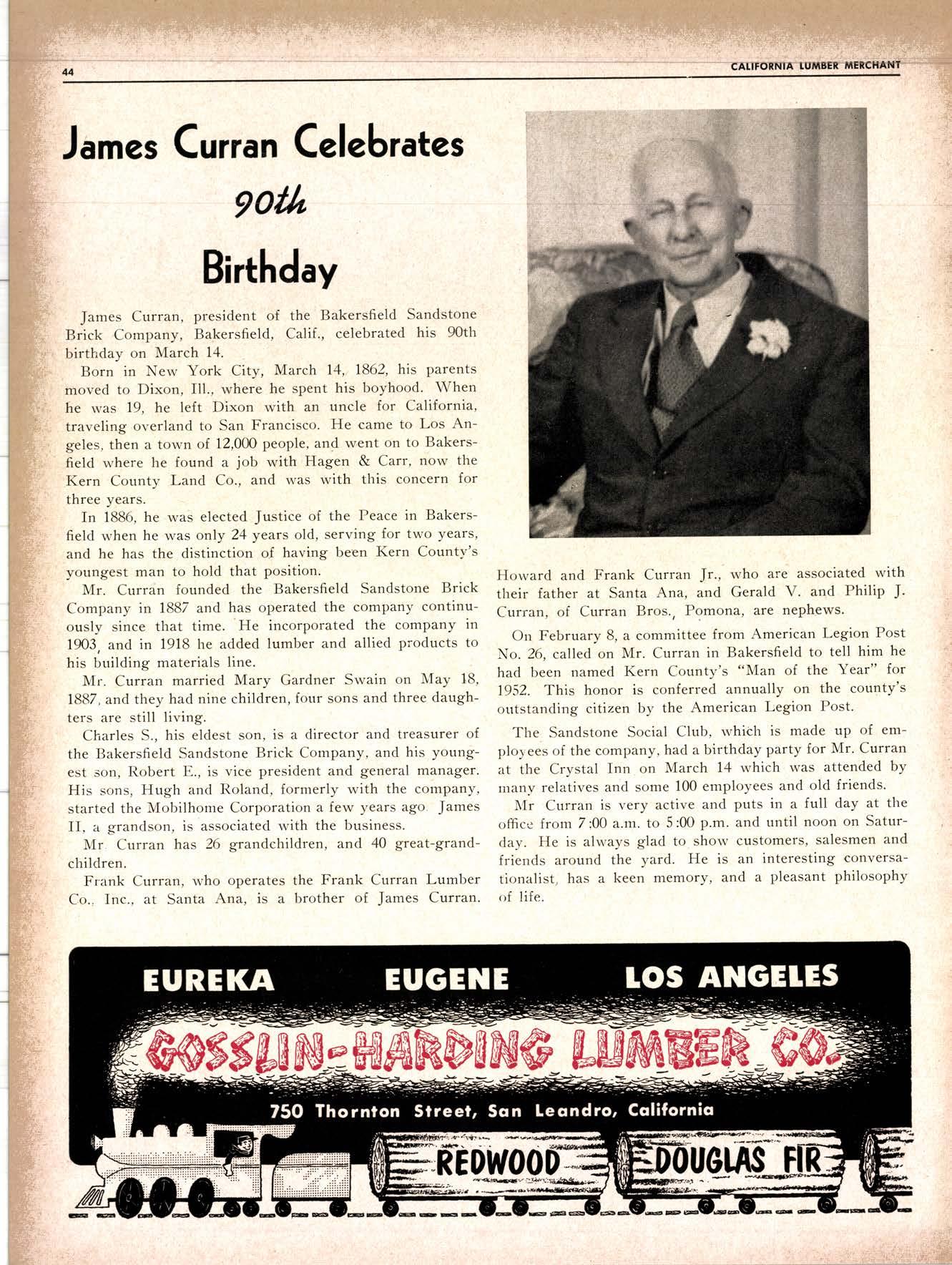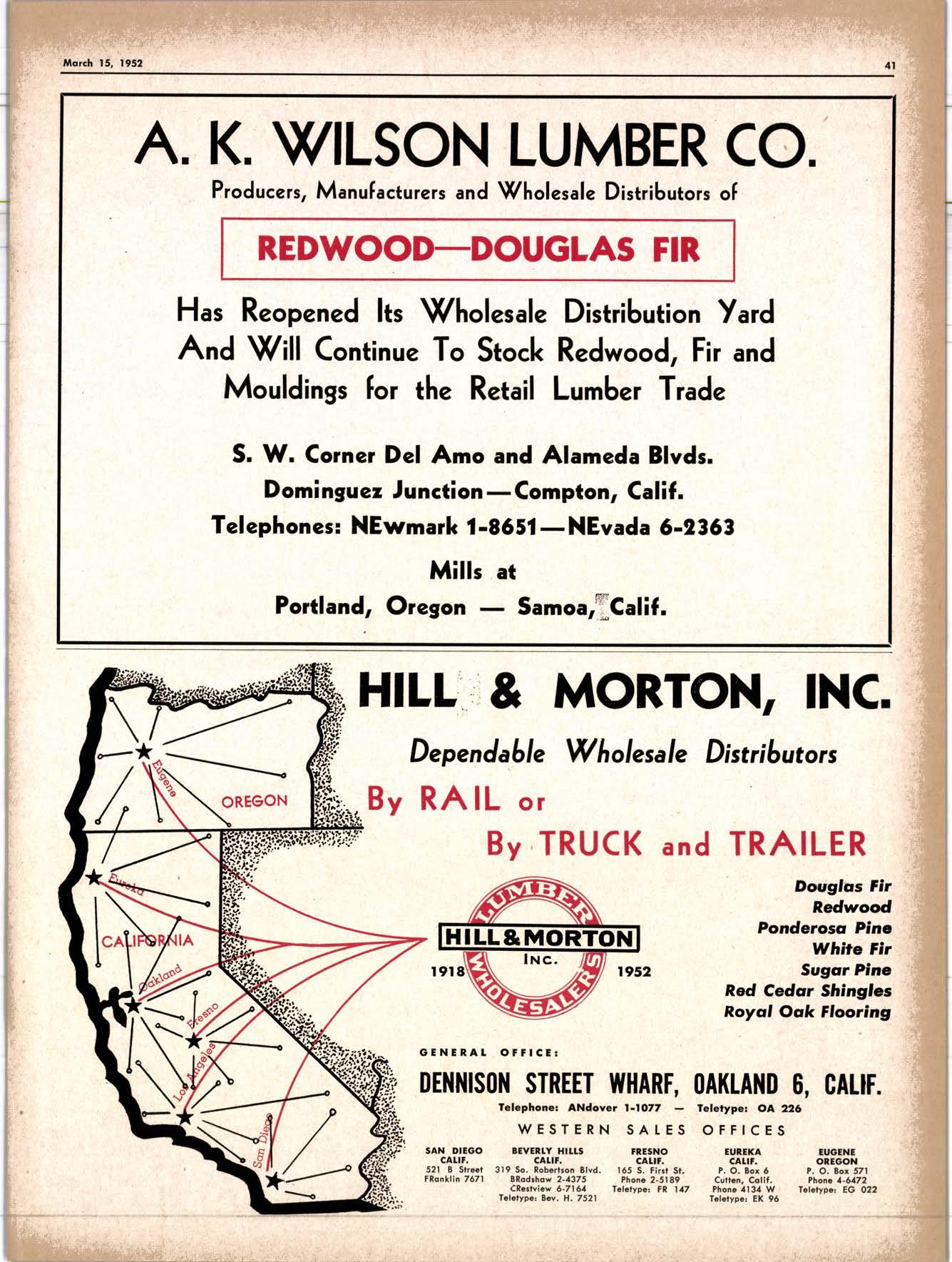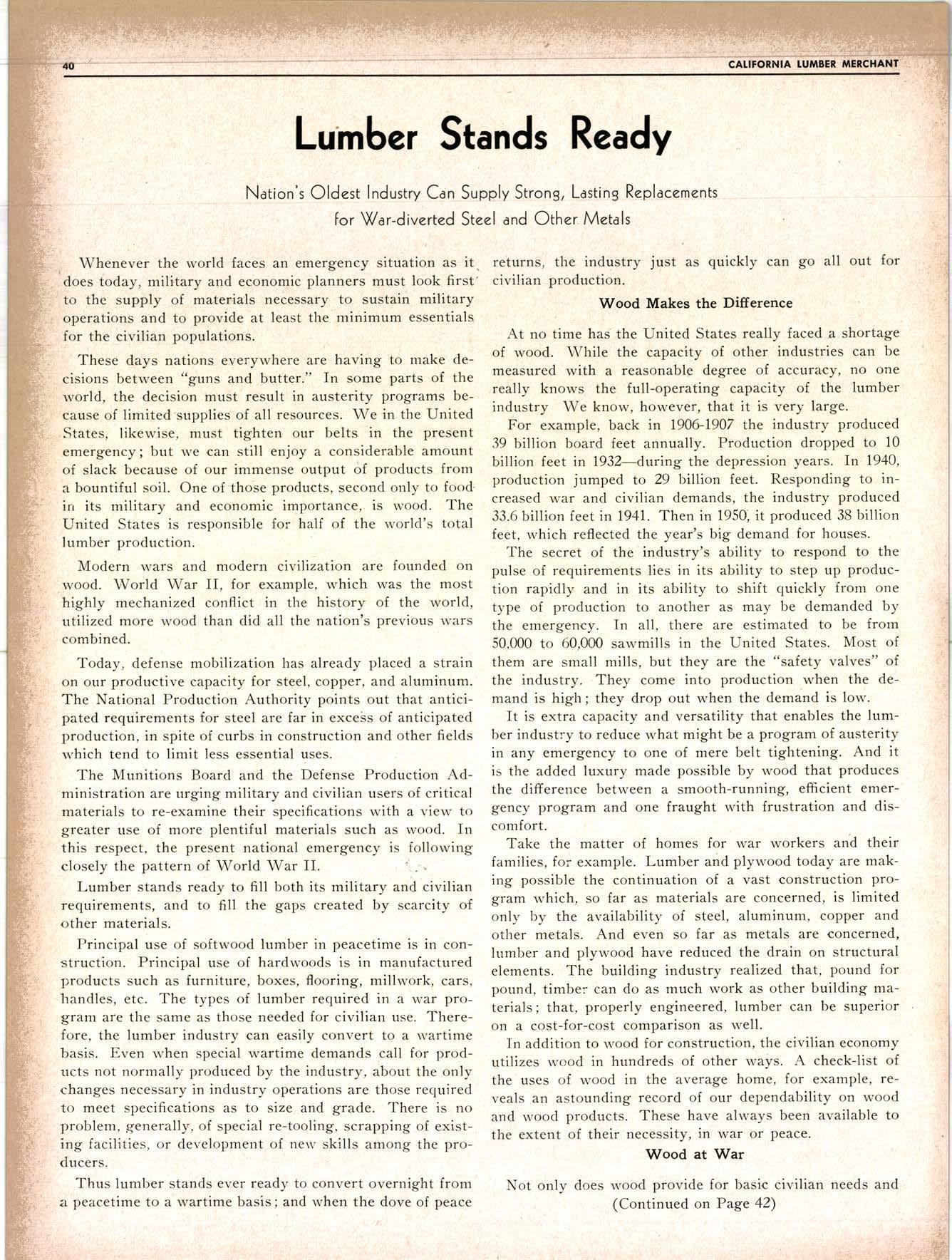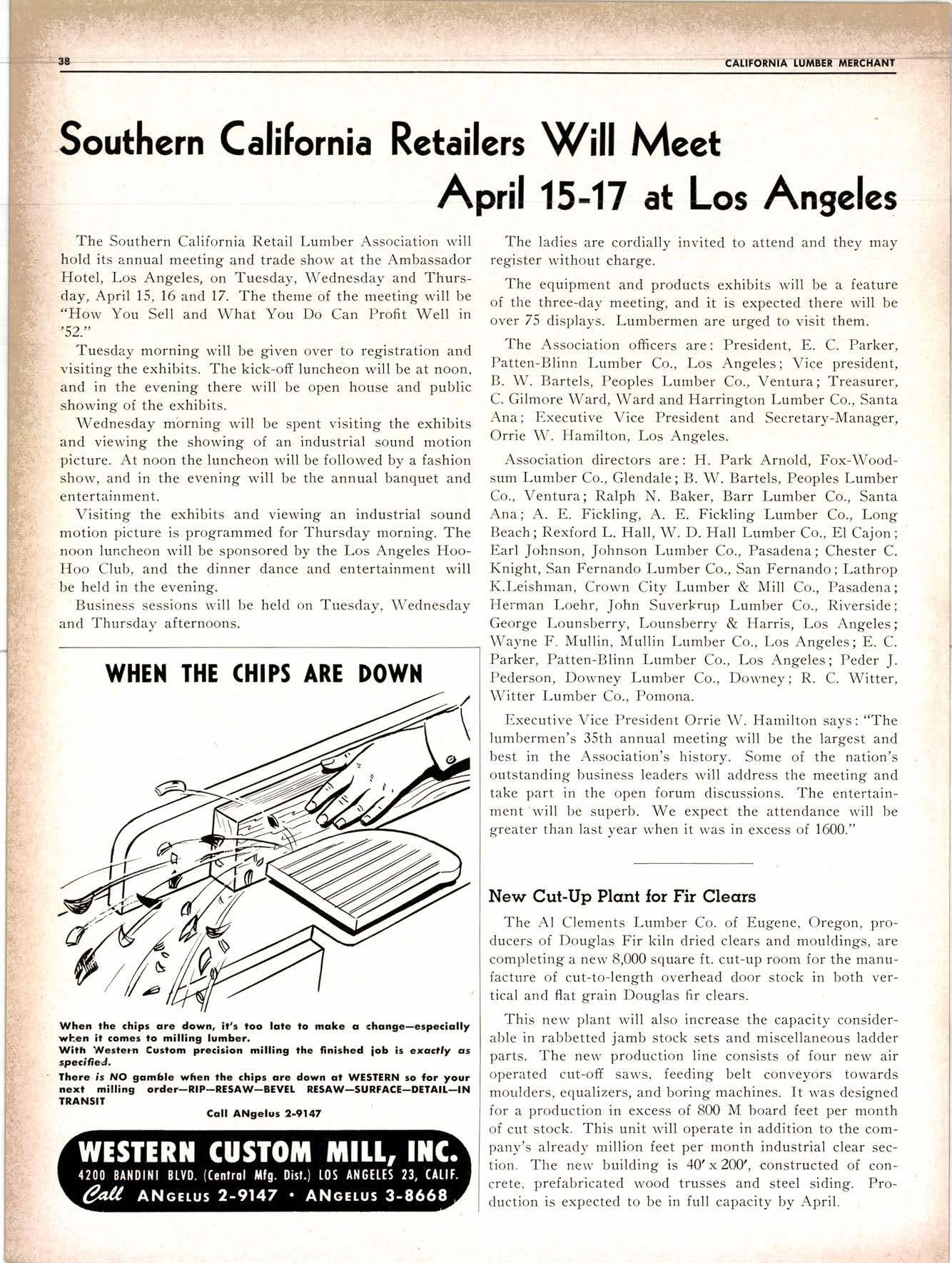
4 minute read
CPR 126--Ceiling Prices lor Pacific Northwest Douglas Fir And
Ponderosa Pine Poles and Plling
Dollars-and-cents ceilings for standard dimensions of untreated Douglas fir and Ponderosa pine poles and pilings produced on the West Coast were announced recently by the Office of Price Stabilization.
The ceilings are spelled out for these items, and also for untreated anchor logs, reinforcing stubs and short round material, produced in California and the sections of Oregon and Washington in and west of the Cascade Mountains.
The new ceilings are prestribed in Ceiling Price Regulation 726, effective February 25, 1952, which supersedes the General Ceiling Price Regulation, GCPR.
The new regulation also establishes a method for determining ceiling prices for these items when they have been preservatively treated.
Except for small dimension items, the new ceilings are higher than those established January 26, 1951, by the GCPR, which froze prices.when the market was depressed.
OPS said the higher ceilings were established to encourage production to meet a serious shortage of poles and piling which is adversely affecting construction for the Armed Forces, Tennessee Valley Authority, Bureau of Reclamation, Bonneville Power Administration, private utilities, railroads and defense industries.
On intermediate sizes and lengths, covering the bulk of production, the increase over GCPR ceilings ranges from five to 20 per cent. On very large poles, the increase is up to 40 per cent. The new ceilings are related to the ceilings spelled out in Ceiling Price Regulation 97 for saw logs and veneer logs produced in the Pacific Northwest.
During 1950 the demand for poles and piling 1\ras unusually small, amounting to only 43 per cent of the 1949 production, with the result that the market was depressed. Trees that normally would have been converted into poles and pilings were diverted to the production of saw logs. Moreover, during the GCPR base period of f)ecember 19, 1950, to -fanuary 25, 1951, there was also a seasonal slackNCSS.
Poles and piling are select peeled logs, generally cut in lengths longer than saw logs. Poles are used to support telephone and electric transmisbion lines. Piling is used in the foundations of buildings and in'the construction of bridges, docks, and wharves. They must be free from defects and have more rigid requirements for straightness than saw logs.
Suitable trees are limited and are generally scattered through a tract of timber. For this reason, and because they must be handled in longer lengths than saw logs, the production of poles and piling, except for the smaller dimensions, is more expensive than the production of saw logs.
The new regulation spells out ceilings for untreated poles, piling, and other round materials covered, clean peeled, for various diameters and lengths, per lineal foot, in carload lots, delivered at the producer's normal loading out point, either f.o.b. car or boomed and rafted in towable waters.
Prices for poles range from 11 cents per lineal foot for the smallest sizes and lengths up to 90 cents per lineal foot for poles 100 feet in length. '
Prices for piling range from 14 cents per lineal foot for piling with a minimum diameter of eight inches, 15 to 17 feet in length, to $1.20 per lineal foot for piling with a nrinimum diameter of 20 inches and 128 ro 132 feet in length.
For the shorter length items prices range from l5 cents per lineal foot for minimum diameters of five inches to 60 cents per foot for minimum diameters of 16 inches.
I)ifferentials are provided for selected lengths, cutting poles and piling to required lengths, rough peeled and unpeeled, less than carload lots, and other particulars.
N{ethods are prescribed for determining delivery costs which may be added to ceilings for deliveries beyond the normal loading out points.
On sales delivered short of the normal loading out point, the producer must deduct from the ceiling price the cost of transportation to the normal loading out point. The cost of loading at railroad shipping points, or booming and raftirrg in tou'able u'aters, must be deducted from the ceilings if not performed by the producer.
(Continued on Page 20)
profifs Gotne ecrsielond foslerwhen you srick to this ONE window family
Curtis Voodwork dealers have found a simple way to avoid headaches-and to build profits with less effort. They order all the windows and woodwork for any given iob from a single source of supply: Curtis.
The Curtis Silentite window family, for instance, offers such wide variety-so many different window styles-that it meets practically any window need. Curtis W'oodwork, too, is available in a complete line to suit any taste, any size of building budget.
Ordering everything from Curtis meani that the complete job will be harmonious, satisfying, with no "kick-backs." There's less paper work, too, when there's only one order and one handling. And remember, Curtis Silentite'Windows and Voodwork provide ONE high standard of quality, favorably known among home owners, contfactofs and architects throughout the country.

(Continued from Page 18)

The nerv regulation prescribes means of determiniirg ceilings for preservatively treated poles and piling and short rcund materials by applying adjustments to the GCPR ceilings on such items. The adjustment'for any particular item is the difference, plus or minus, between the highest price at whi'ch the treater contracted during the period January 25 to February 24,1951, to purchase the untreated item. and tl-re new spelled out ceiling for the untreated item.
If a treater wishes to determine a ceiling price for a particular treated item which he did not contract to purchase in untreated form during the prescribed period, he obtains his adjustment from the differential between the highest contracted purchase price of his most comparable untreated item and the new spelled out ceiling price for the untreated item.
Treaters who cannot determine ceilings in this manner must apply to the Director of Price Stabilization for approval of a proposed ceiling price, which they may not employ until approved by OPS.
Producers may similarly apply for ceilings for untreated items for which prices are not spelled out, but may, pending approval of the ceilings, sell the items at the proposed ceilings, subject to adjustment to conform to any changes lvhicl, OPS may take in the ceilings.
Persons who buy or sell poles and piling or the other materials covered in the regular course of business must maintain ,complete records of sales or purchases made in any month in which they sold or bought more than $1,000 worth of the items covered.
Ycrd Mcrncgers Appointed
United Lumber Yards, Modesto, Calif., announces the appointment of Stanley Wedic as manager of its yard at E,mpire and John Wever as manager of the Ripon yard. Both Stan and John have been with the company for several years and the appointments are the result of excellent work.



